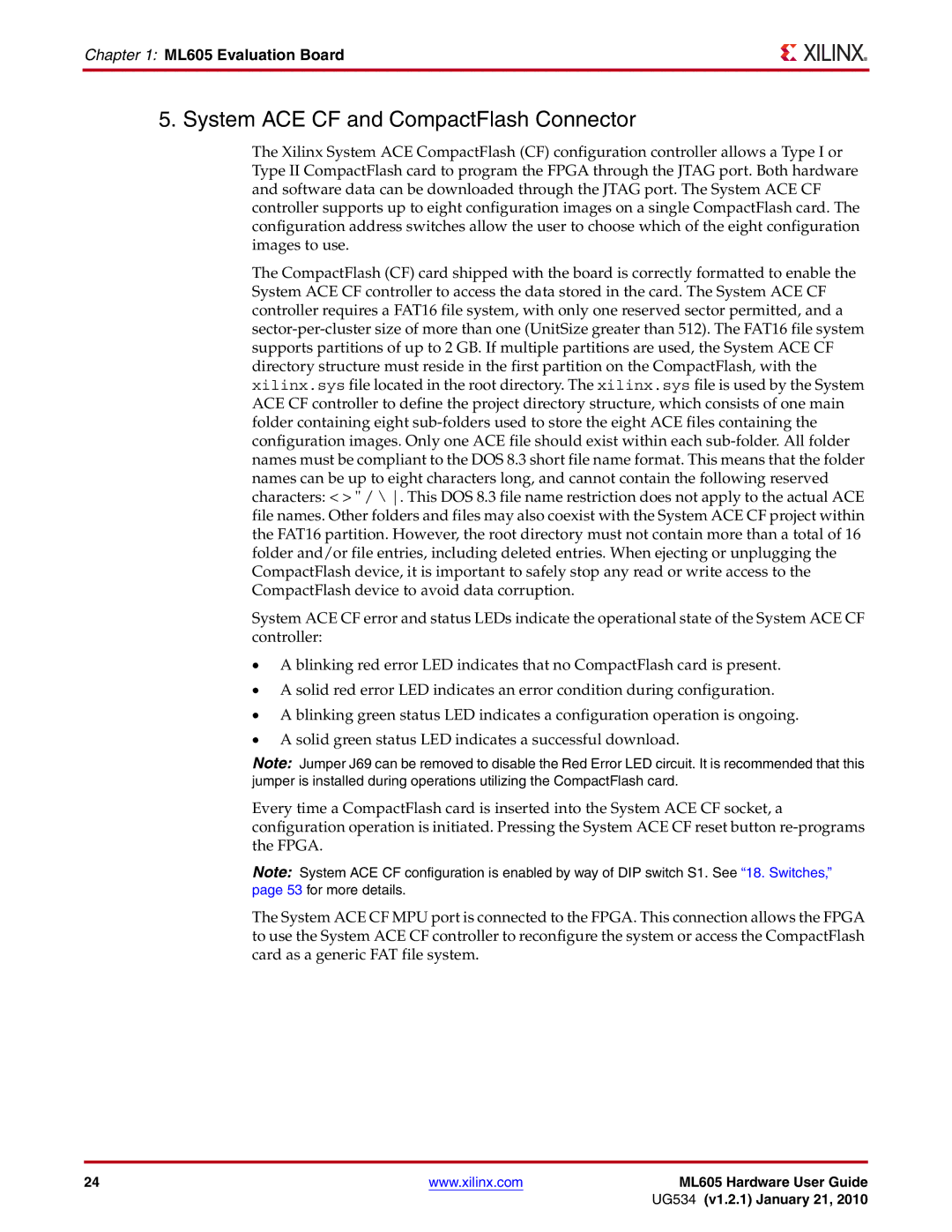
Chapter 1: ML605 Evaluation Board
5. System ACE CF and CompactFlash Connector
The Xilinx System ACE CompactFlash (CF) configuration controller allows a Type I or Type II CompactFlash card to program the FPGA through the JTAG port. Both hardware and software data can be downloaded through the JTAG port. The System ACE CF controller supports up to eight configuration images on a single CompactFlash card. The configuration address switches allow the user to choose which of the eight configuration images to use.
The CompactFlash (CF) card shipped with the board is correctly formatted to enable the System ACE CF controller to access the data stored in the card. The System ACE CF controller requires a FAT16 file system, with only one reserved sector permitted, and a
System ACE CF error and status LEDs indicate the operational state of the System ACE CF controller:
•A blinking red error LED indicates that no CompactFlash card is present.
•A solid red error LED indicates an error condition during configuration.
•A blinking green status LED indicates a configuration operation is ongoing.
•A solid green status LED indicates a successful download.
Note: Jumper J69 can be removed to disable the Red Error LED circuit. It is recommended that this jumper is installed during operations utilizing the CompactFlash card.
Every time a CompactFlash card is inserted into the System ACE CF socket, a configuration operation is initiated. Pressing the System ACE CF reset button
Note: System ACE CF configuration is enabled by way of DIP switch S1. See “18. Switches,” page 53 for more details.
The System ACE CF MPU port is connected to the FPGA. This connection allows the FPGA to use the System ACE CF controller to reconfigure the system or access the CompactFlash card as a generic FAT file system.
24 | www.xilinx.com | ML605 Hardware User Guide |
|
| UG534 (v1.2.1) January 21, 2010 |
